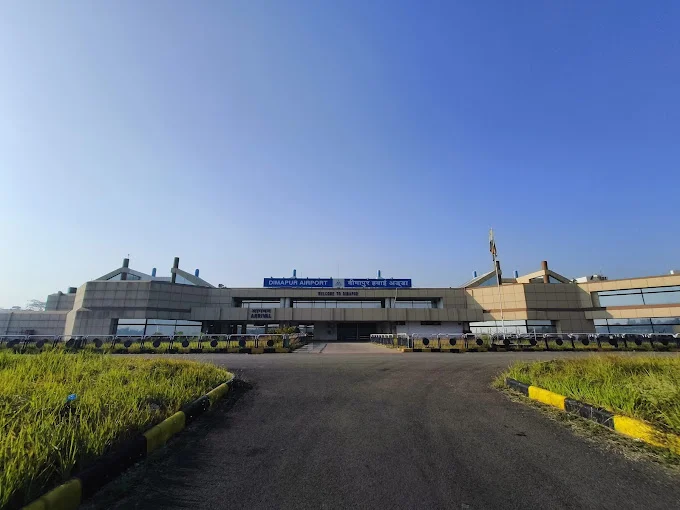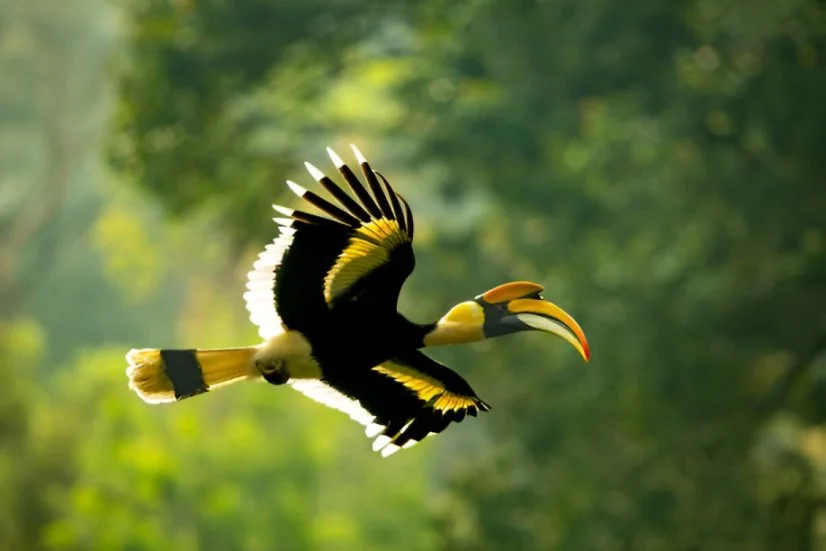Experience Hornbill Festival in Nagaland: A Complete Guide
Every December, the beautiful state of Nagaland in India becomes a colourful and exciting place for the Hornbill Festival. This special event celebrates Naga culture and is named after the big hornbill bird. During the festival, you can see different tribes from Nagaland showing their traditional dances, playing music, and sharing delicious food, all in a stunning natural setting with friendly people. Because it’s so connected to the local community, many visitors come to enjoy this real cultural experience. If you love learning about different cultures, going on adventures, or just being curious, this festival is a special chance to see what makes the Naga people unique. As we look at the exciting things to see and do at the Hornbill Festival in Nagaland, you’ll understand why it is such an important and beautiful part of India’s culture.
Book here India Tour Packages.
What is the Hornbill Festival?

The Hornbill Festival is popularly known as “The Festival of Festivals.” The festival is celebrated during the first week of December. It is named after the beautiful bird, the colourful hornbill, which is considered to be an animal in Naga folklore and gives the rich cultural heritage of the different tribes of the state. The Nagaland Government has devised this festival at the Kisama Heritage Village near Kohima, the capital city. It hosts traditional Naga music and dance performances, arts and crafts, and indigenous cuisines show, thus providing a vibrant platform for displaying one’s unique traditions in its show. Events of wrestling, archery, and mock battles demonstrate the martial spirit of the Naga people, while stalls are filled with handmade artefacts, clothing, and jewellery.
When and Where Does the Festival Take Place?
The Hornbill Festival takes place in Nagaland, India, from December 1 to December 10 every year. Named after the Great Indian Hornbill, the festival is held in Kisama Heritage Village, near the capital city of Kohima. Known as the “Festival of Festivals,” it brings together the diverse Naga tribes to showcase their rich culture, traditional music, dance, crafts, and cuisine.
Organized by the Nagaland government, the event promotes cultural exchange and tourism, drawing visitors from all over the world. The festival includes vibrant tribal performances, handicrafts, local food stalls, traditional sports, and night rock concerts, making it a lively and immersive cultural experience.
How to reach Nagaland For the Hornbill Festival
1. By Air

The quickest way to reach Nagaland is by air. The nearest airport is Dimapur Airport (DMR), located about 74 kilometres from Kohima, the state capital. Several airlines operate flights to Dimapur from major Indian cities such as Kolkata, Guwahati, and Imphal. Alternatively, you can fly into Guwahati Airport (GAU), which is well-connected and then take an overnight bus or hire a taxi to Dimapur or Kohima.
2. By Train

Travelling by train is a scenic way to reach Nagaland. The nearest major railway station is Dimapur Railway Station, which is well-connected to several cities across India. You can catch trains from cities like Guwahati, Kolkata, and other northeastern states. Once in Dimapur, taxis and local buses are available for travel to Kohima, where the Hornbill Festival is held.
3. By Road

If you prefer the road trip adventure, Nagaland is accessible via several national and state highways. The most common route is from Guwahati to Kohima, which takes about 8 to 10 hours by car. The journey is filled with stunning landscapes and scenic views, making it a memorable experience. State-run and private bus services are also available for intercity travel.
The Significance of the Hornbill Bird in Naga Culture

The hornbill bird holds deep cultural and symbolic importance in Naga society. Known for its striking appearance and vibrant colours, the hornbill is revered as a symbol of strength, courage, and dignity among the Naga tribes. In traditional Naga folklore, the hornbill represents the connection between the earthly and the spiritual realms, often embodying the spirits of ancestors or conveying divine blessings. Its feathers are used as decorative elements in traditional attire, especially in ceremonial headgear, symbolizing prestige and honour. The bird’s distinct presence in festivals and rituals also underscores its role as a cultural emblem of unity among the tribes, uniting them under shared beliefs and values. Celebrating the Hornbill Festival, named after this iconic bird, is a tribute to its cultural significance and a means of preserving the Naga heritage for future generations.
Key Attractions at the Hornbill Festival
1. Tribal Performances and Dances
Traditional dances, music, and folk performances by the 16 Naga tribes are a major highlight. Each tribe brings unique styles, attire, and dances that tell stories of their history, beliefs, and daily life.
2. Morungs (Tribal Huts)
The festival grounds have replicas of “morungs” (traditional Naga huts) where each tribe sets up its display. These huts showcase traditional crafts, artefacts, and sometimes even cooking methods, giving visitors a feel of Naga village life.
3. Indigenous Sports and Games
Traditional Naga sports like archery, wrestling, and bamboo pole climbing are popular attractions. Another crowd-favourite is the “Naga King Chili Eating Competition,” where participants try to eat one of the hottest chillies in the world!
4. Naga Cuisine
Food stalls offer authentic Naga cuisine, which includes smoked meat, fermented foods, and rice beer. Tribal delicacies, like “smoked pork with bamboo shoot,” attract food enthusiasts eager to try unique flavours.
5. Handicrafts and Handlooms
The festival has a vibrant market where artisans sell handwoven shawls, baskets, jewellery, and woodcrafts. Naga textiles and handloom products are especially popular for their intricate designs and vivid colours.
6. Rock and Music Festivals
The Hornbill Music Festival, held alongside, features local and international bands. It also includes a rock contest that draws music lovers and emerging talents, adding a modern twist to the traditional celebrations.
7. Fashion Shows
The Hornbill Festival includes a fashion segment where traditional Naga attire is displayed with a modern fusion twist. Local designers and models showcase Naga-inspired fashion, promoting the cultural attire with a contemporary touch.
8. Night Carnival
Every evening, Kohima hosts a night carnival filled with food stalls, street performances, and shopping. The lively atmosphere is ideal for mingling with locals and trying various Naga treats.
9. Art and Photography Competitions
The festival includes art exhibitions and photography competitions, where local artists and photographers showcase their talent. The art reflects the scenic landscapes, culture, and daily lives of Nagaland.
Tips for attending the Hornbill Festival in Nagaland
1. Plan Your Trip Early: Book your accommodations and transport well in advance, as the festival attracts a large number of visitors.
2. Dress Appropriately: Wear comfortable clothing suitable for the weather. Traditional attire can enhance your experience, so consider wearing or bringing local garments.
3. Stay Hydrated and Eat Wisely: The festival offers a variety of delicious local cuisine, but make sure to stay hydrated. Try the local delicacies but also keep snacks handy in case you need a quick energy boost.
4. Explore the Stalls: Don’t miss the handicraft and handloom stalls. It’s a great opportunity to purchase unique souvenirs and support local artisans.
5. Participate in Cultural Activities: Engage in various activities like local games, dances, and workshops. It’s a fun way to immerse yourself in the culture.
6. Respect Local Customs: Familiarize yourself with the customs and traditions of the Naga tribes. Be respectful and mindful of their practices, especially when it comes to photography.
Conclusion
The Hornbill Festival in Nagaland is a captivating celebration of Naga culture, unity, and tradition, drawing together locals, travellers, and tribes from across the state. Through its vibrant displays of traditional dances, music, food, and art, the festival serves as a bridge to Naga heritage, offering a unique opportunity for cultural immersion. It not only preserves and celebrates tribal identities but also promotes sustainable tourism and supports local artisans. Attending the Hornbill Festival allows visitors to experience the rich diversity of Nagaland in an authentic, welcoming environment, making it a truly memorable and enriching experience.
Here you can also check our India and International Tour Packages.
People also ask about the Hornbill Festival in Nagaland
1. What is the Hornbill Festival?
The Hornbill Festival is an annual cultural festival held in Nagaland, India, celebrating the rich cultural heritage and traditions of the Naga tribes. It features traditional music, dance, crafts, and culinary delights, serving as a platform for showcasing the diverse cultures of Nagaland.
2. When does the Hornbill Festival take place?
The Hornbill Festival is typically held from December 1st to 10th each year. The event coincides with the Nagaland Statehood Day, celebrated on December 1st.
3. Where is the festival located?
The Hornbill Festival takes place at the Naga Heritage Village in Kisama, which is approximately 12 kilometres from the state capital, Kohima. The venue is designed to exhibit Naga culture through traditional architecture and displays.
4. What activities can visitors expect at the festival?
Visitors can partake in a variety of activities, including traditional dance performances, music concerts, art exhibitions, sports competitions, and food stalls featuring local cuisine. Additionally, there are handicraft exhibitions and workshops where artisans demonstrate their skills.
5. Is there an entry fee for the Hornbill Festival?
Yes, there is a nominal entry fee for visitors attending the Hornbill Festival. The fee may vary each year, and tickets can typically be purchased at the festival entrance.
6. Are there accommodations available during the festival?
Yes, there are various accommodation options available in Kohima and surrounding areas, including hotels, guesthouses, and homestays. It is advisable to book accommodations in advance due to the high influx of visitors during the festival.
7. What is the significance of the Hornbill bird in the festival?
The Hornbill bird is considered a symbol of the Naga tribes and represents their cultural identity. The festival is named after this bird, which is revered for its majestic appearance and is often associated with various tribal myths and folklore.
8. Can tourists participate in the festival’s events?
While many events are primarily cultural displays, tourists are often encouraged to participate in certain activities, especially workshops and interactive sessions. However, participation in traditional performances may be limited to local tribes.
